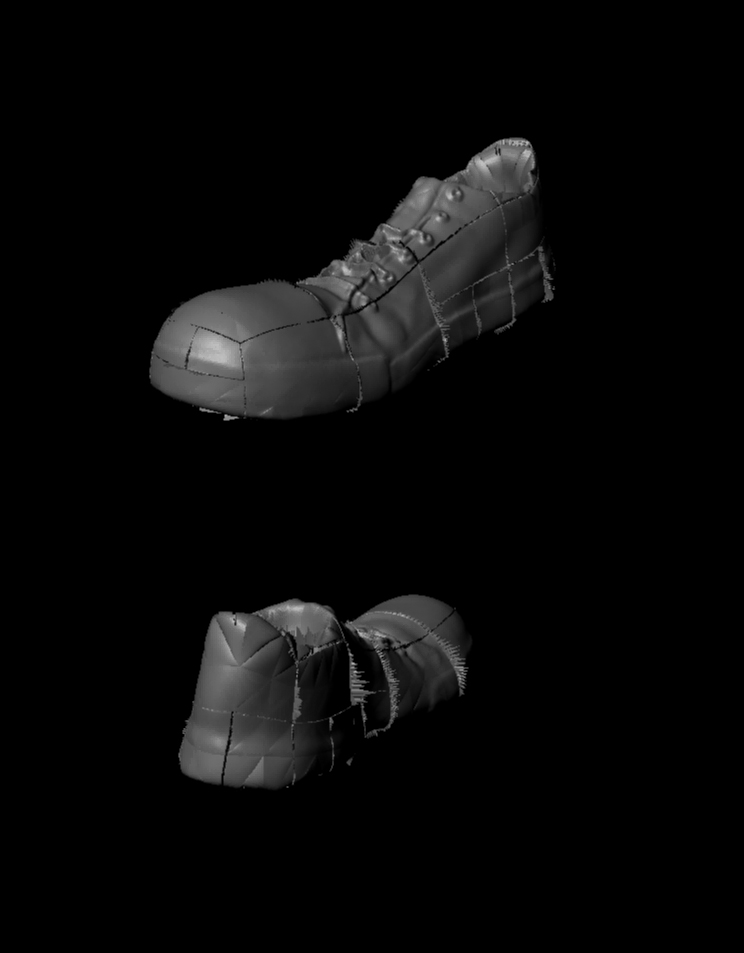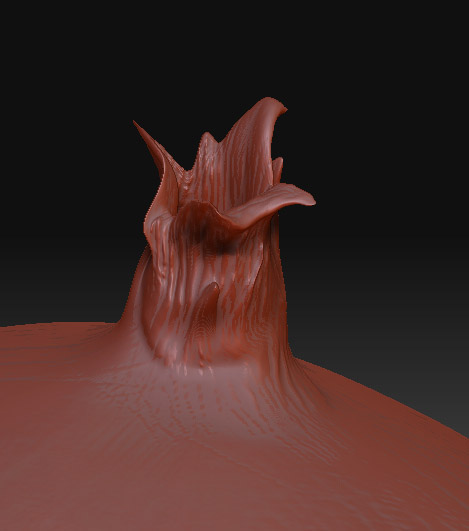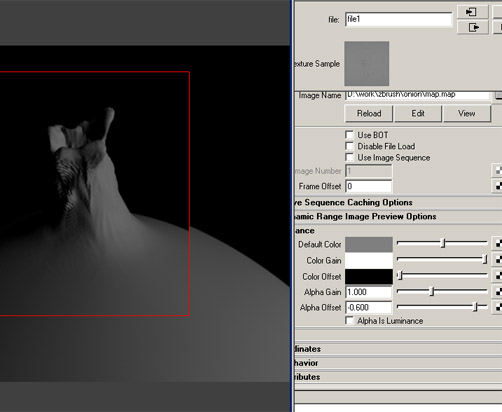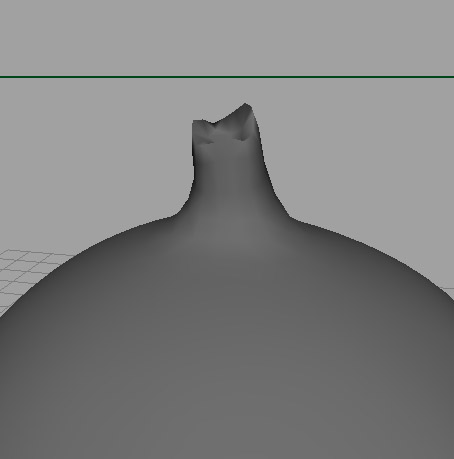hey there petekasim, if you want send me the file(Ztool) and ill take a look at it for you…
Thanks for suggestion Atwooki, but it hasn’t worked. The seams are still appearing… This is getting depressing, as I have spent ages sculpting some highly detailed characters and can’t bear the idea of having to simplify them.
PixolClay, thanks so much for offering to take a look. I have emailed a ztool to your main email address as found on the pixolclay.com website
I tried increasing the density of the base OBJ files which I export, and it has reduced the size of the seams a bit, however I’m afraid the models will be far too dense to animate.
—(((Another note, the mental ray approximation node alone is not enough to subdivide the models accurately. Unless I smooth the mesh once, it always explodes slightly at render time. Has anyone else ever experienced this???)))—
Thanks again to anyone who may be able to help
Attachments

ZBrush generates displacement maps a little differently for ZBrush native primitives, at least I know it deals with scale differently. It is interesting you dont have the problem with something that is native ZBrush… When you export to UV then reimport to ZBrush sees it as an obj file from an external application.
Thanks for the input Scott. I would be keen to hear if you can think of any potential fixes further to the ones you have already described. Unless a solution is found very soon I’m going to have to resign myself to using normal maps only.
Considering that I’m making an animated piece, maybe all the movement will be distracting enough that the audience won’t be able to tell the difference?
Not that this is any consolation but from what your describing things are not right with your model. I have had situations where the lowres was so low I had to set the approximation WAY high to get detail but exploding meshes arent normal. I am interested in what Pixoclay has to say upon seeing the mesh/ztool.
Forgove me if you mentione this already but you are using Maya 2008 with no service pack, correct? Have you tried in other renderers?
Did you use MD3 to make your displacement map in ZBrush?
Scott
Scott, I’ve been away from the computer for a couple of days (had to clear my head), but Pixolclay just got back to me regarding the ZTool I sent him. Apparently, my UV’s were the problem!
Here’s what he had to say:
“The issue was in with your UV’s. The UV’s were
divided into different shells. Although they looked correct and merged,
they weren’t. I simply redid them in Headus and applied that to the
ZTool.”
I don’t know what has caused the UVs to “divide”, I made them by
copying the original OBJ, physically unwrapping the faces in Maya and
creating a planar UV layout, then copying the UV attributes back to my
original model. Strange.
Anyway, many thanks for the input Scott, I’m finally a step closer to establishing a decent workflow!
Hi folks,
so now I´ve had some time to check this SP1 bugfix for the ccmesh displacement stuff myself and I´m really very disappointed. Although Autodesk is mentioning in their release notes that this UV-seam problem should have gone now with SP1, it still exists !!!
I´ve made a test. With the standard behaviour (without applying Scott´s or my MEL script) there are still seams visible at the UV borders of my model. After applying that piece of MEL script they are gone. So the problem is still NOT fixed by Autodesk!  :td:
:td:
Marco
I have to agree with you marco. My first tests after downloading the update looked great. I was however working with a model with emaculate strait edged uv’s. Since then I have tried throwing on automatic maps just for some tests and have also encountered some seams.
Sky Asay
Hey everyone. your friendly neighborhood displacement complainer is back with his stupid ONION. have been doing some maya rigids and now i’m back to these wacky zbrush to maya 2008 SP1 displacements.
[ ]
]
probably because your trying to turn an onion into a banana
displacements are not meant to preform miracles.
You have a form the going in 3 separate poles, XYZ all at once.
Displacements cannot do that. Limit your tests to coming straight off the form.
Use the layer brush to deform the mesh for your experiments.
Its time to let the onion go.
It will be ok hand me the onion.
Maybe you should try bowling ball or something. 
this is the original maya model…
[ ]
]
this still means nothing with how the model has been edited in zbrush?
my poor onion…
And you ran this super sweet script by scott spencer?
I just ran a displacement without it and it did not work.
even with sp1
//COPY THE SCRIPT FROM HERE
// mental ray Subdivision Approximation script
// by scott spencer
//converts all subdivision approximation nodes in the scene from CCMesh to subdivision surface as well as sets the option
// to use maya style alpha detection
optionVar -iv “miUseMayaAlphaDetection” 1 -sv 1 1; //sets maya style alpha detection - mthe same as
// checking the Alpha is Luminance box in the file node but this works for all displacements in the scene
string $selected[] = ls -type mentalraySubdivApprox; // selects each subdivision approximation node in the scene and adds to an arry
int $size = size ($selected); // creates the counter variable
for ($a=0;$a<$size;$a++) //increments thru the array
{//beginning of loop
string $name = $selected[$a]; // this variable accesses each element of select using $a as an index
addAttr -ln “miExportCCMesh” -at bool $selected[$a];
}
//END OF SCRIPT
cannedmushrooms. I didnt use the script mainly b/c i thought people were having good results with SP1. after using the script i must say that i am getting some much more reasonable results.
But regardless I think i’m going to turn down the deformations to an earlier version in zbrush just so maya doesnt struggle to meet the deformations.
Am I having issues b/c of the recess at the top that i pushed in further in zbrush?
would Normal Maps increase the accuracy to what maya can display of a zbrush mesh?
I made a simple test in maya 2008 ext. 2 ( which I did not understood yet if it contains SP1), and what I saw is that ccmesh does not smooth uv.
Simply, I made a cube with extra edgeloops near the main edges to crease the final subdivided mesh, so I can saw better how UVs are distorted.
From the results I obtain I think ccmesh uses linear uv.
Tomorrow I will make a test exporting a displacement with no “smooth uv” option checked and I will let you know the result.
Anyway I hope Autodesk will fix this bug as soon as possible cause ccmesh was about 3 times faster than old algorithm
I used the Scott script on Maya ex 2 tests a while back and it fixed the seam issue for me. Without it, it was as seamy as it was with maya 2008.
I’ve did a little messing with my mesh character, to where I’ve
deleted history… I’m sure I could have attached the approximation
to the old mesh some how, but generated a new one…
If you ‘Delete History’, you’ll LOSE OUT ON THE SEAM FIX (MEL Script):
addAttr -ln “miExportCCMesh” -at bool mentalraySubdivApprox1;
It was mentioned earlier to add this script to your shelf, but that’s no
help… Instead, Select your mesh with the approximation on it, and press
CTRL+A (Attribute Editor)… You’ll see a tab with the right name of the
approximation (eg. blah_blah_blah_SubdivApprox3; )
You must change the number after the ‘Approx’ to match the one applied to
your mesh…
Instead of jumping back to this forum every time I need that bit of MEL,
(-‘cause I be deletin’ some history now…) I just did a Create>Annotation
and pasted the script… It sticks with me now throughout my scene.
See attached image… Pretty handy…
Any-who…Take care pixol pushers!
~Drucifer
Attachments

can someone just copy and paste what exactly i have to put in the MEL script… i get syntax errors when copying scott’s scipt i don’t know exactly where it starts or what i have to copy… plz thnx
wow marco your a life saver. this just fixed a major seam problem of mine.
thanx alot, and the problem was solved for me through this thread from the start. BUT is the same issue expected to occur in maya 2009 ?? …I didn’t upgrade yet to 2009 just because I don’t want to get this issue again…
thanx